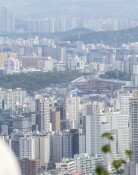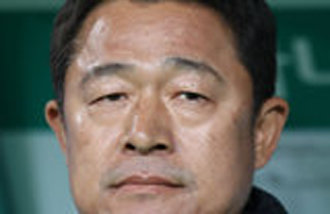Asan Shrine Gets Long-Awaited Facelift
Asan Shrine Gets Long-Awaited Facelift
Posted April. 28, 2006 06:57,
Hyeonchungsa Shrine, located in Asan City, Chungnam Province and built to honor the patriotic spirit of Chungmugong Yi Sun-shin, also known as Admiral Yi, will be completely transformed as a comprehensive Chungmugong Center that also serves as a cultural education center.
It has been 38 years since former President Park Jung-hee ordered the memorial shrine project in 1968.
According to the recently selected plan of the Hyeonchungsa Shrine Management Office, the 160-pyong Hyeonchungsa will be enlarged to 400-pyong, and it will be renamed as the Chungmugong Memorial and reopen in 2011.
They plan to create an exhibition hall that displays are artifacts related to Chungmugong and will spend 15.7 billion won until 2012 to that end.
The management office also decided to relocate the artifact exhibit hall, which is currently inside the shrine, to its outer perimeter so visitors can read detailed information about Chungmugong in the exhibition hall, and then come inside the memorial hall.
Furthermore, a folklore village will be built around the area surrounding Chungmugongs old house, and the interior of the old house itself will be restored after undergoing meticulous historical research. In addition, Chungmujeong, the well that was used by Admiral Yi, will also be restored and an experience facility will be set up at the archery range.
Close to the old main hall, which is near the artifact exhibit, an outdoor exhibit hall showing the Dong-A Ilbo article that led to the construction of the shrine, and documents related to the construction itself will be installed.
The old main hall was erected during the Japanese colonial rule and represents the strength of the Korean people that stood up against the Japanese.
On May 13, 1931, Dong-a Ilbo reported exclusively that the fields belonging to the 13th Deoksoo Yi generation, located in Asan-gun, and used to cultivate products in order to maintain the costs of rituals at Chungmugongs grave, were at the risk of being seized and auctioned because of debts.
The following issue carried an editorial titled, National Disgrace Chungmugongs Grave Harassed by Debts and urged the conservation of relics related to Chungmugong.
In addition, Chunwon Lee Gwang-soo published the novel series Yi Sun-shin in order to instill national pride, which ran from June 1931 to April 1932, for a total of 178 episodes.
The reporting influenced about 20,000 Koreans, including 400 organizations, to donate a total sum of 16,000 won. The Chungmugong Historic Artifact Conservation Association was created on May 23, 1931, and after paying off the debts, doubled the size of the fields belonging to the Yi family. In July of the same year, Hyeonchungsa Shrine Hall, or the old main hall, was completed and a new tombstone and monument were erected.
The Dong-A Ilbo June 3, 1932 editorial described the peoples passionate enthusiasm as the following: In discovering the true heart of the nation, there was no difference in class, ideology, or rich or poor. Some missed a meal to donate funds, others sold clothing, and some even labored to send money.
Dong-A Ilbo illustrator Lee Sang-beom drew a portrait of Chungmugong, and when it was enshrined on June 5 1932, about 30,000 gathered to see the event.
Hyeonchungsa Shrine Management Office Chief Kim Sa-won commented, After the 1968 enshrinement project, the Hyeonchungsa facilities have become worn-out and failed to acquire more artifacts, becoming no different from 40 other Chungmugong memorials in other regions. We will faithfully follow the overall reorganization plan.
Myung-Hun Jee mhjee@donga.com







